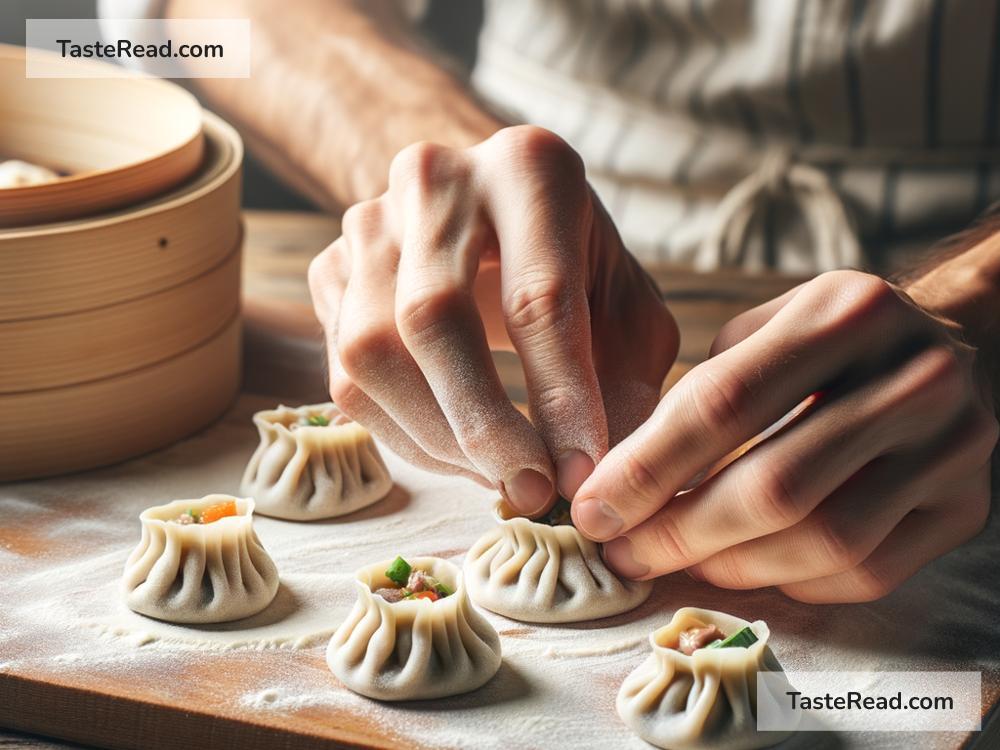How to Make the Perfect Chinese Dumplings
Dumplings, simple pockets of dough filled with savory delights, have a special place in Chinese cuisine. They symbolize prosperity and are a must-have during the Chinese New Year. But guess what? You don’t have to wait for a special occasion to enjoy these delicious treats! Making the perfect Chinese dumplings is an art you can master at home with some patience and practice. Here’s your guide to creating those delightful dumplings from scratch.
Ingredients You’ll Need:
- For the Dough:
- 2 cups all-purpose flour
-
About 3/4 cup of warm water
-
For the Filling:
- 1/2 pound ground pork or chicken
- 1 cup finely chopped cabbage
- 2 green onions, finely chopped
- 1 tablespoon soy sauce
- 1 teaspoon minced ginger
- 1 teaspoon sesame oil
-
Salt and pepper to taste
-
Extras:
- A small bowl of water for sealing dumplings
- Vegetable oil for frying
- Soy sauce, vinegar, and chili oil for dipping
Step 1: Prepare the Dough
Kneading dough may seem daunting, but it’s pretty straightforward. Start by placing the flour in a large bowl. Gradually add warm water, mixing with your hands until a dough starts to form. Transfer the dough onto a floured surface and knead it for about 10 minutes until smooth. Cover it with a damp cloth and let it rest for 30 minutes. This resting time helps our dough to relax and makes it easier to roll out later.
Step 2: Make the Filling
While your dough takes a nap, mix all the filling ingredients in a large bowl. It’s important to chop everything finely so the flavors blend together nicely. Use your hands or a spoon to ensure the ingredients are well mixed. Taste a bit and adjust the seasoning to your liking—just remember it should be slightly stronger than you’d prefer, as it will mellow out once steamed or fried.
Step 3: Roll and Fill
After the dough has rested, it’s time to shape it into dumplings. First, divide the dough into small pieces, roll each piece into a ball, then flatten it with a rolling pin into a round wrapper about 3 inches in diameter. Don’t worry if they’re not perfectly round—what matters is the love you’re putting into making them!
Hold a wrapper in one hand and place a spoonful of filling in the center. Now, the fun part begins: folding. Moisten the edges of the wrapper with a bit of water, fold it in half over the filling, and press the edges together to seal. You can simply seal them tight or get creative with pleats. Either way, make sure there are no gaps for the filling to escape.
Step 4: Cook Your Dumplings
There are several ways to cook dumplings: boiling, steaming, or frying. Each method offers a different texture and flavor.
-
Boiling: Bring a large pot of water to a boil, gently add your dumplings, and stir to prevent sticking. Once they float to the top, let them boil for another 2-3 minutes. Enjoy them hot with your favorite dipping sauce.
-
Steaming: If you prefer a softer texture, steaming is the way to go. Place dumplings in a steamer lined with parchment paper over boiling water. Steam for about 15-20 minutes.
-
Frying: For crispy dumplings, heat a bit of oil in a pan, add dumplings, and fry until golden brown. Add a small cup of water and cover the pan. Once the water evaporates, fry them a little more for that extra crunch.
Step 5: Serve and Enjoy
Serve your homemade dumplings hot with a side of soy sauce, vinegar, and maybe a little chili oil for those who like it spicy. Making dumplings can be a fun family activity where everyone can get involved in folding and cooking. It’s not just about making food but creating memories.
Conclusion
There you have it—simple steps to making the perfect Chinese dumplings. Whether you like them steamed, boiled, or fried, nothing beats the satisfaction of enjoying dumplings you’ve made yourself. Experiment with different fillings and methods to find your favorite. And remember, practice makes perfect. Happy cooking!


